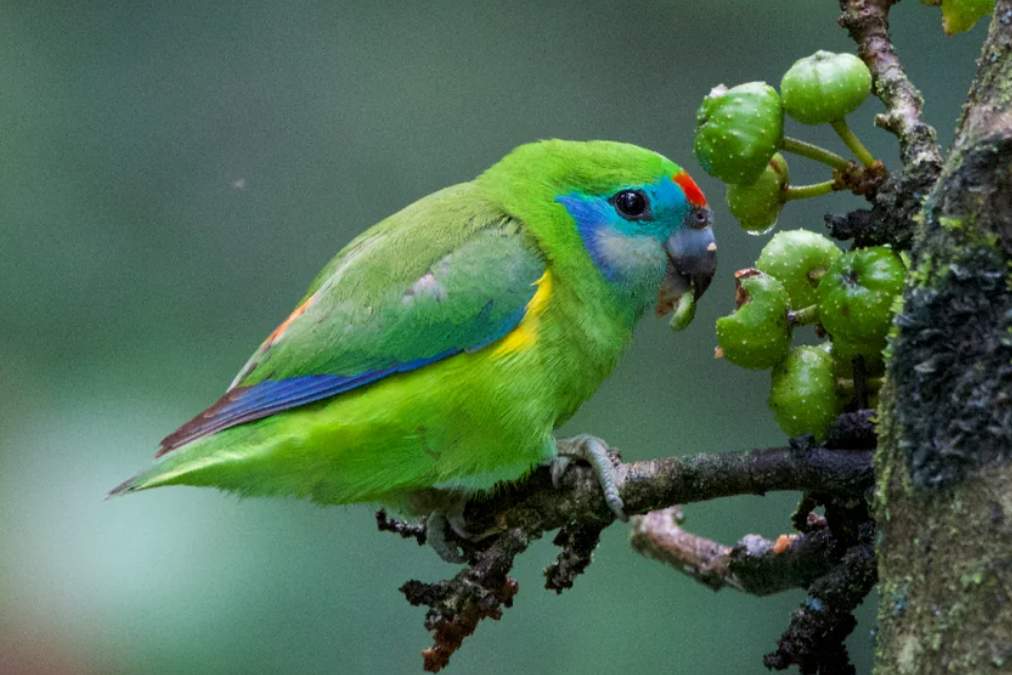The size of the White woodpecker (Melanerpes candidus) is about 24–27 cm in length. The strikingly-plumed medium-sized woodpecker is a South American species of the family Picidae. In open country, woodpecker groups often fly in procession lines of four to ten, with distinctively floppy wing beats. In most cases, it is black and white. They have white heads, faces, underparts, and rumps, sometimes with buffy tints. However, the upper part of the body, wings, and tail are black.
The wings are mostly glossy black, but the flight feathers are browner, and the underwings are greyer. Black is the dominant color of the tail, with white covering the upper tail coverts. From the eye to the nape and mantle, there is a black stripe. Around the pale iris, a yellow orbital ring forms striking ‘goggles’. Lores are dusky, with the long grayish bill, paler at the base. There is a grayish color to the legs. There is a slight difference between the sexes.

Both have variable yellow belly patches, but the male also has yellow on his breasts and nape. Juvenile woodpeckers have less glossy black, white areas more buff, yellow areas paler, and the orbital rings are less distinct. Yellow spreads onto the nape of juvenile males. There may also be some yellow on the female’s nape. September through November are the months when it breeds. The breeding habits of this species are not well understood. It is possible that it nests communally at times.
The white woodpecker call is very vocal. Groups are very noisy, keeping in contact with chattering kirrr-kirrr-kirrr or creee-creee-cree-creek calls, usually made in flight, recalling some Sterna terns. Its natural call is loud, chirping, rolling or harsh, throaty wheerrr-keerrr notes. Also a loud slurred ghirreh or kreer. There may be no drumming, or perhaps only a few drummings, but the information is lacking.
White woodpeckers are widespread and increasingly adaptable, occurring in urban areas, even in major cities like So Paulo, foraging in fruit plantations, and being tolerant to forest fragmentation.
Wooded savannas, forest edges, and open dry tropical woodlands are the habitats of white woodpeckers. Among them are scrub, palm, and orange groves, orchards, woodlots, mangroves, suburban areas with scattered large trees, and plantations (including introduced species like eucalyptus and poplar).

South America is the range of the species. East of the Andes from Surinam, French Guiana, Brazil, SE Peru, Bolivia, Paraguay, Uruguay, and N Argentina. A nonmigratory woodpecker tends to move short distances. The range in this vast area is rather discontinuous but is expanding over the logged areas of the Atlantic Forest. It is found from sea level to around 2000 meters.
Normally, it is resident, but it has a tendency to wander. Monotypic, there is a slight variation, therefore previously placed in the genus Leuconerpes. Founded in 1796 in Cayenne by the French naturalist Bernhard Christian Otto, it was first described as Melanerpes candidus.
Foraging and food include arboreal insects, honey, much fruit, berries, and seeds; it is a significant disperser of the latter. During noisy family parties, the woodpecker forages for food. It feeds on adult insects, larvae, and honey in wild bee and wasp nests.
Read More – Crimson-breasted Woodpecker







